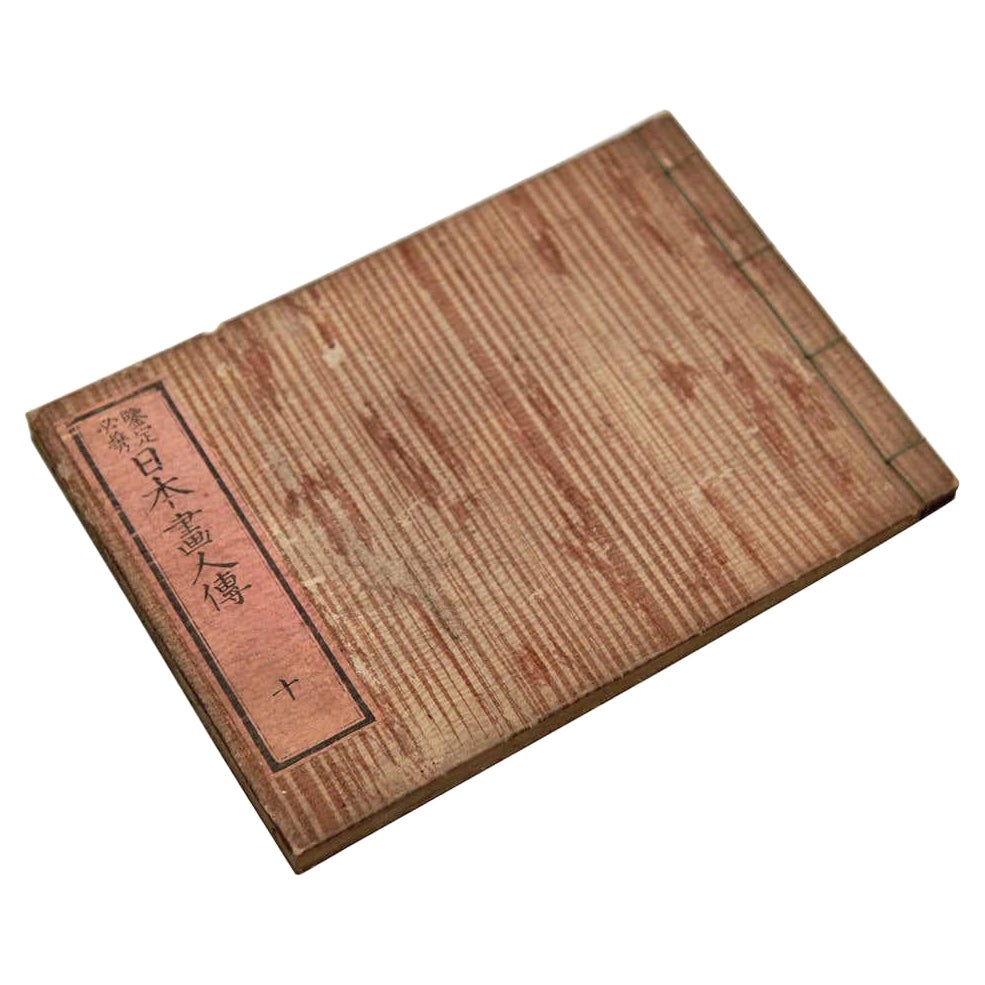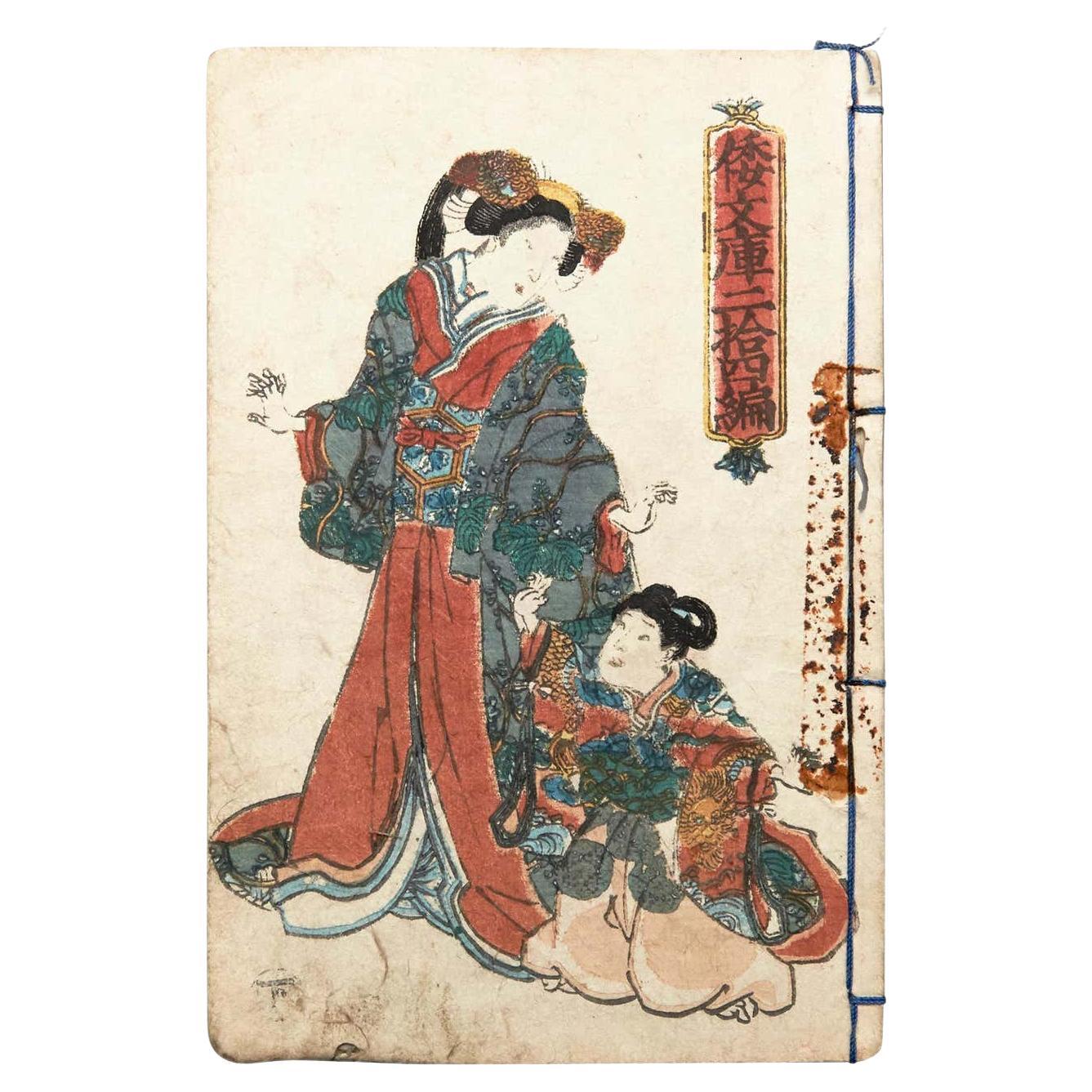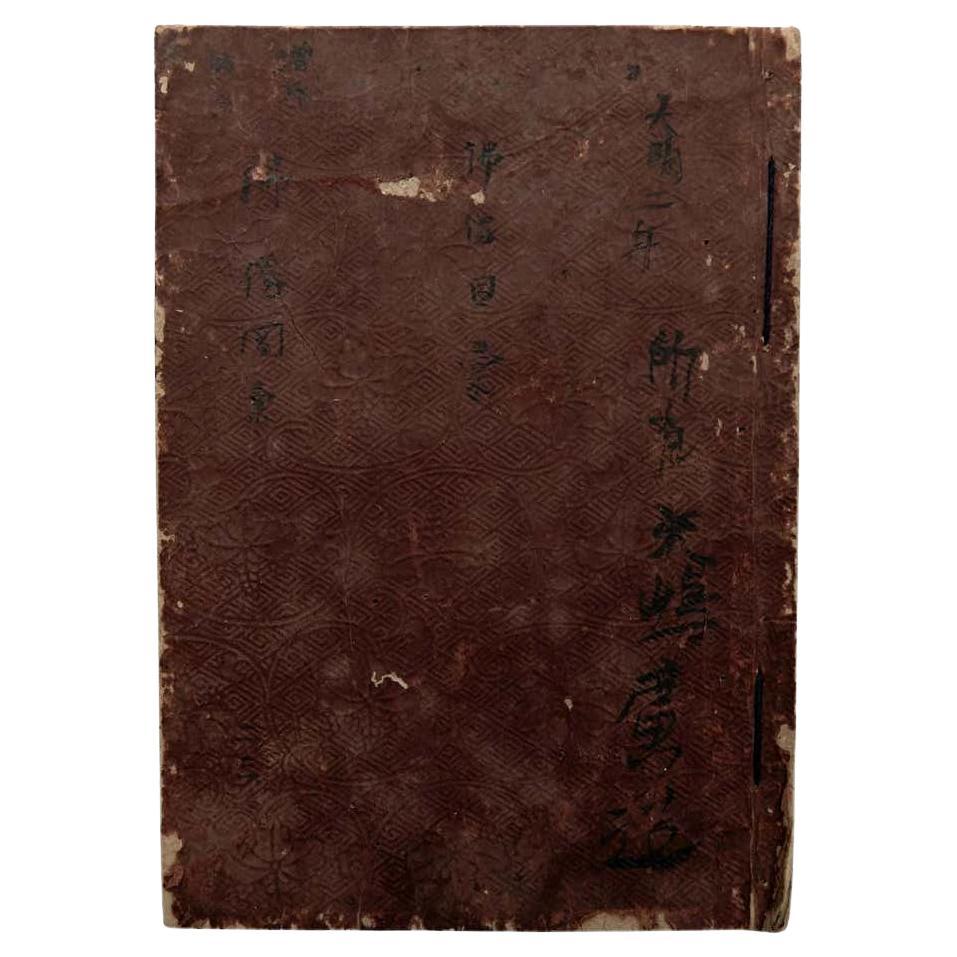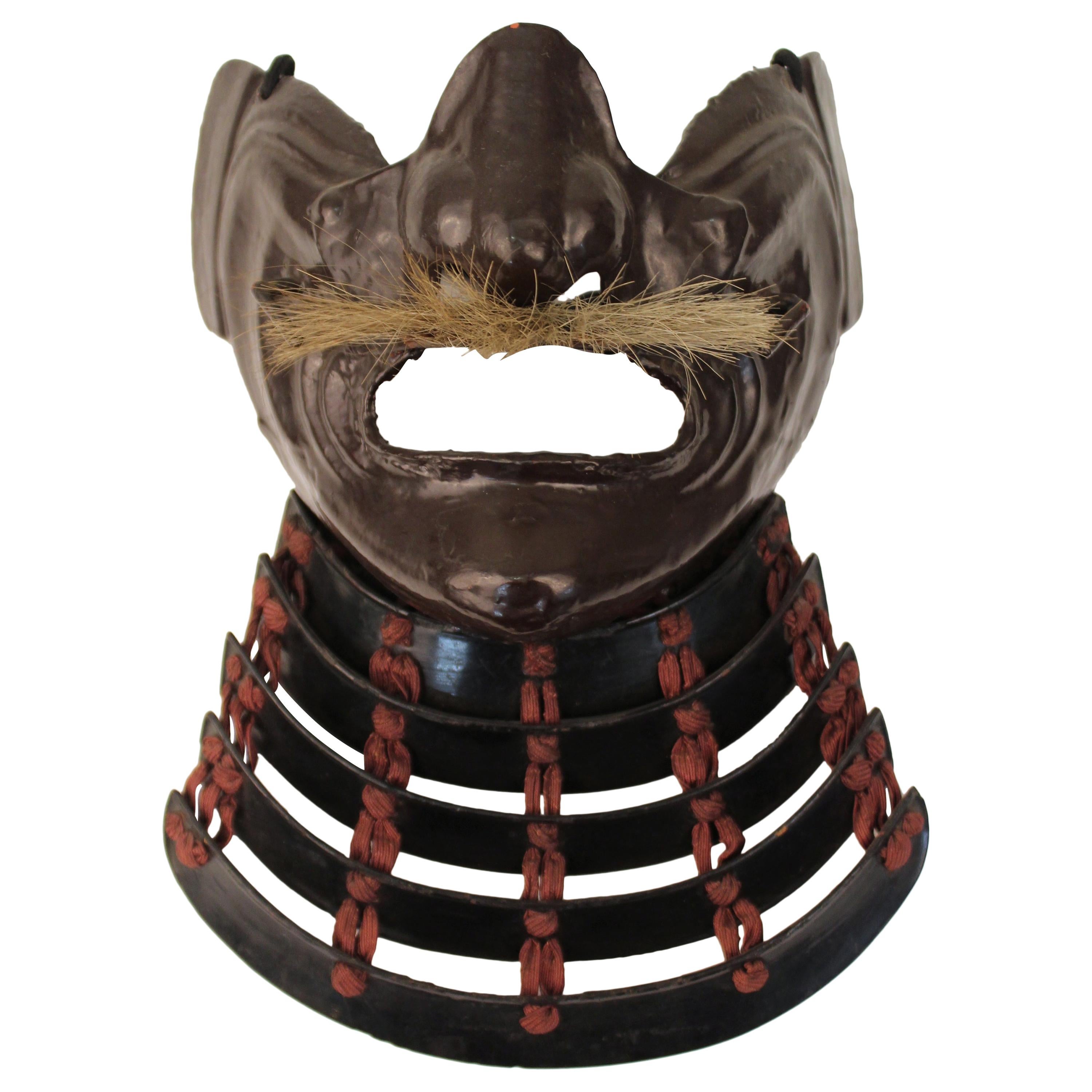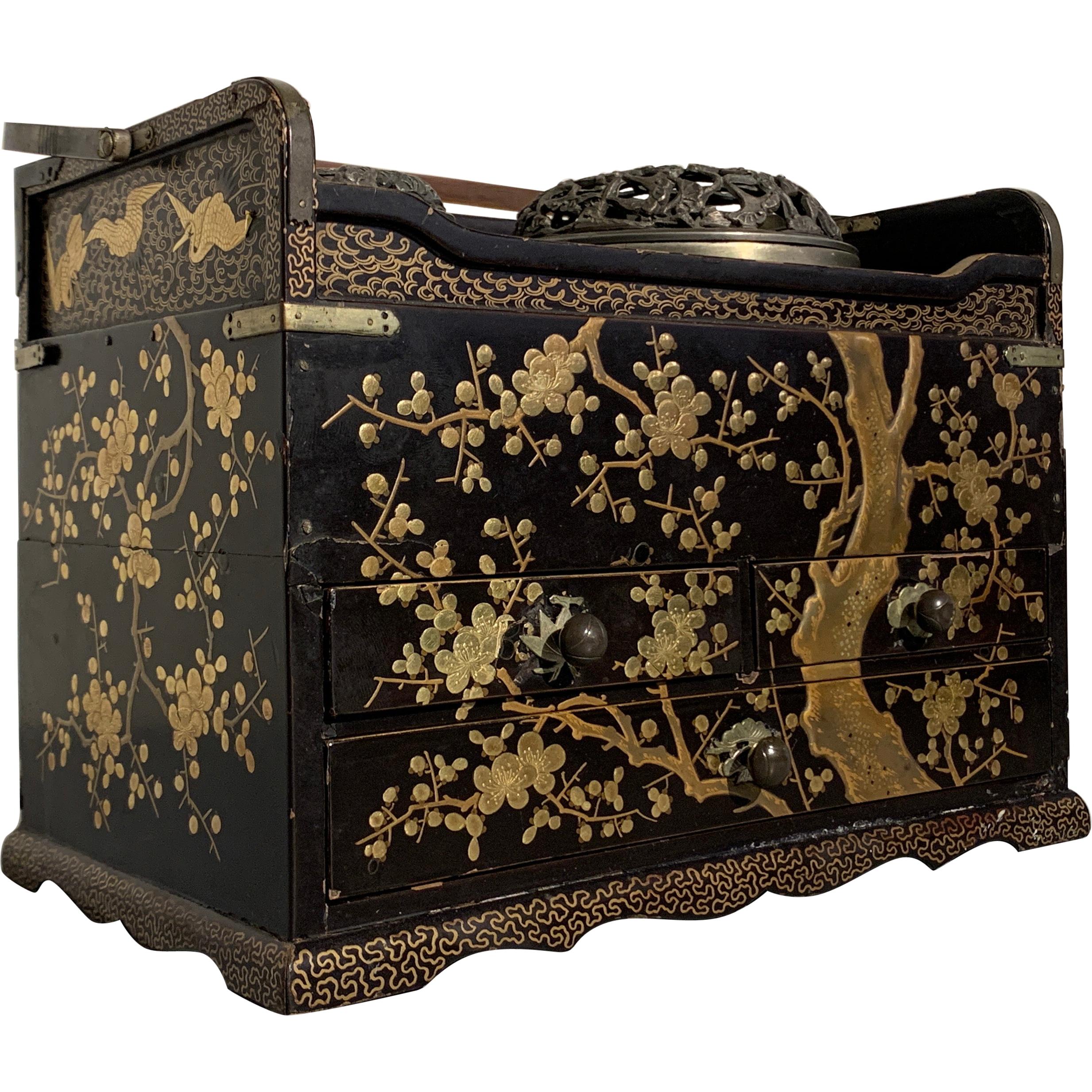Items Similar to Japanese Life-Size, Edo Period, Red and Black Lacquered Palanquin or Norimono
Want more images or videos?
Request additional images or videos from the seller
1 of 10
Japanese Life-Size, Edo Period, Red and Black Lacquered Palanquin or Norimono
About the Item
A Japanese red and black lacquered palanquin or norimono
Edo period, early 19th century
Made of lacquered wood, latticework and bamboo, black velvet and gauze with gilt scrolling vine decorations, sliding doors and roll-down shutters and engraved copper fittings, with a black lacquered yoke for carrying. It bears mons, emblems identifying Japanese families, at the front and back of the norimono; the gyo~yo~mon, and more specific the hanagyo~yo~ (based on the blossoming apricot). Outside Japan intact norimono’s are rare.
H. 95 x L. 125 x W. 78 cm
Length of yoke: 380 cm
Transport for the Wealthy
The Tokugawa shogunate strictly regulated all overt symbols of status, wealth, and power, such as dress, furnishings, number of attendants and certainly also the form, decor, materials, and number of bearers of the norimono. In the earlier Heinan period, the privilege of riding in a norimono was reserved to the reigning Emperor and his principal consort. By the beginning of the Edo period, the use of palanquins had increased to such an extent that they were in danger of losing their exalted status as symbols of power and privilege. Still the greater the status of the passenger, the more elaborate the palanquin. The simplest type of palanquin, kago, was merely an undecorated, basket-like, open structure made of bamboo, covered by a roof of matting, and carried by two bearers. More elaborate types of palanquins were made of wood, and the term norimono is used to describe ornate palanquins decorated with lacquer and limited to passengers of high status.
Nabeshima Family
In the Edo period the hanagyo~yo~ mon on the present norimono belonged to the daimyo Nabeshima family which ruled over the province of Hizen in the area of Saga and Nagasaki prefecture. The Nabeshima family had close connections with Nagasaki where they were appointed by the Shogu~n to defend the Nagasaki Bay. With an income of 357.000 Koku, the Nabeshima family belonged to the wealthy and important Tozama-Daimyo~ of the Edo period. Nabeshima was a side line of the Sho~ni-clan which after several defeats against the O~uchi and the Ru~zo~ji was in decline and moved to Nabeshima in the province of Hizen where they settled and took the name of the town. In the fight over the dominion of Kyu~shu~, Nabeshima sided with the Ryu~zo~ji-clan but were decisively beaten by the rising Shimazu-clan in 1584. In 1587 Nabeshima sided with Toyomoti Hideyoshi during his invasion of Kyu~shu~. Hideyoshi granted Nabeshima the region round Saga fief in gratitude. The leader of the family Nabeshima, Naoshige, also joined Hideyoshi in his invasion of Korea, as a commander. After Hideyoshi’s death in 1598, a fight for power ensued in which Nabeshima changed sides, but after the final victory of Tokugawa Ieyasu were able to hold on the fief Saga, one of the richest regions of Japan. As an ally of the Tokugawa Shogunate, Nabeshima was decisive in suppressing the Christian Shimabara revolt in Kyushu in 1637. In the Boshin War of the Meiji uprising, Nabeshima joined the Satsuma- Cho~shu~ reform party and although they lost their rule over Saga in the Meiji period, they did remain one of the influential families of the so-called Meiji Oligarchy.
A Dutchman in a Norimono
Some form of human-powered transport, be it a litter, sedan chair or palanquin, is almost universal but particularly in Japan the palanquin, norimono, was very common. Because of the limited availability of grazing in this overcrowded and mountainous country, severe restrictions were placed upon the use of horses for other than military purposes.
Between 1641 and 1860 the VOC was the only European company allowed in Japan. Like all the local Japanese daimyo, the Dutch yearly had to make a voyage from their settlement in the bay of Nagasaki to the court of the Shogun in Edo (Tokyo) to pay their respect and bring presents from the West. This was the only time in the year the Dutch were allowed off their small island of Deshima. They travelled in norimonos like the present one, carried by two or four men. Franz von Siebold described his journey in a norimono: “in such a palanquin the traveller sits on a flat floor covered with mats, bear- or tiger skins. The Japanese are used, from childhood on, to sit on their folded legs. With us only small persons can do so, but for larger persons to sit like that all day in a palanquin is torture!”
After Blomhoff had sent a miniature norimono to the Netherlands for the Royal Cabinet of Curiosities, as part of a complete series of 110 model items depicting the court journey train, his successor as Dutch Opperhoofd in Japan, Johan Willem de Stu¨rler (1774- 1855) in 1834 sent the norimono he travelled into the Netherlands, which now is in the collection of the Museum of World Cultures Leiden. Stu¨rler, as military man involved in one of the battles against France, was injured at his hip and as a result, had difficulties bending one of his legs. Therefore, the norimono that Stu¨rler sent has a hole cut in the foot end so he could stretch his wounded leg. Unlike Siebold, Blomhoff found travelling in a norimono very comfortable although he did say he sometimes descended to stretch his legs during the daily eight-hour journey. A copperplate engraving from Gedenckwaerdige Gesantschappen der Oost-Indische Maatschappy in’t Vereenigde Nederland aen de Kaisaren van Japan, Getrokken uit de Geschriften en Reisaentekeninge der zelver Gesanten, by Arnoldus Montanus, publ. Jacob van Meurs, Amsterdam 1669, shows the procession of the Dutch Opperhoofd on his court journey in a palanquin like the present one (see, Uit Verre Streken, November 2018, item 57). Throughout the Edo period the basic form of the palanquins changed very little. Following the resignation of the last Tokugawa shogun in 1867, there ensued a rapid transformation of the Japanese society. Palanquins, the elite conveyances of the Tokugawa shogunate, were quickly displaced by horse-drawn carriages fashioned after European models and by the jinrikisha, a wheeled vehicle pulled by one man. Few norimono survived intact.
Norimono in Europe
Immediately after the end of the sakoku policy of the closed country and the opening of Japan to the world, the Danish ambassador in Hong Kong, Mr. Block, in 1860 acquired a true norimono for the Royal Ethnographic Museum in Copenhagen, now in the Japanese Department of the National Museum in Copenhagen. A few more were imported into European collections but many of them were either adapted to be used as exotic chairs, as playhouses for children or withered away in barns. Outside Japan an intact one like the present norimono is rare. Only the textile in the windows and the ropes in the bamboo shutters had to be replaced with (original) gauze and ropes from Japan.
- Dimensions:Height: 37.41 in (95 cm)Width: 49.22 in (125 cm)Depth: 30.71 in (78 cm)
- Style:Edo (Of the Period)
- Materials and Techniques:
- Place of Origin:
- Period:
- Date of Manufacture:1800-1810
- Condition:Repaired: Only the textile in the windows and the ropes in the bamboo shutters had to be replaced with (original) gauze and ropes from Japan. Reupholstered.
- Seller Location:Amsterdam, NL
- Reference Number:1stDibs: LU5458229651382
About the Seller
5.0
Vetted Seller
These experienced sellers undergo a comprehensive evaluation by our team of in-house experts.
Established in 1985
1stDibs seller since 2020
19 sales on 1stDibs
Typical response time: 3 hours
- ShippingRetrieving quote...Ships From: Amsterdam, Netherlands
- Return PolicyThis item cannot be returned.
More From This SellerView All
- Rare 17th Century Japanese Export Lacquer Medical Instrument BoxLocated in Amsterdam, NLA rare Japanese export lacquer medical instrument box Edo-period, 1650-1700 L. 19 x W. 6 x H. 8.5 cm This unconventionally shaped lacquer b...Category
Antique 17th Century Japanese Edo Lacquer
MaterialsGold
- Japanese Export Nagasaki Lacquer Box with the Portrait of Napoleon BonaparteLocated in Amsterdam, NLA Japanese export Nagasaki lacquer tobacco box with the portrait of Napoleon Bonaparte Edo-period, circa 1810 The box in black lacquer on copper, ...Category
Antique 19th Century Japanese Edo Lacquer
MaterialsCopper, Gold
- Japanese American Cypresswood or Hirohi ‘Walsh, Hall & Co, Yokohama’ Tea ChestLocated in Amsterdam, NLA Japanese Cypresswood or hirohi ‘Walsh, Hall & Co, Yokohama’ tea chest Yokohama, 1862-1897, with inscription reading: Choicest Natural Leaf Yamashiro Tea, Packed by Walsh, Hall & Co, Yokohama Measures: H. 53.5 x W. 61.5 x D. 41.5 cm Including original wood box The chest gold, silver and red lacquered on a black lacquer ground, the top decorated with an eagle sitting on a branch, looking at a small escaping bird, the front with a pheasant under a chestnut, one side with a cockerel amongst foliage, the back decorated with an argus pheasant...Category
Antique Late 19th Century Japanese Meiji Furniture
MaterialsWood
- Japanese Painting Depicting Commodore Perry’s Ship with Buddhist Monks AboardLocated in Amsterdam, NLA Japanese painting depicting Commodore Matthew Perry’s flagship USS Mississippi bringing the coffin with the remains of US marine private Robert Williams who died while serving on t...Category
Antique Mid-19th Century Japanese Edo Paintings and Screens
MaterialsPaint, Paper
- Japanese Sculpture Okimono of a Dutchman, Dutch Colonial, 18th CenturyLocated in Amsterdam, NLAn extremely rare wood Japanese Okimono of a Dutchman playing with a bat Edo period, 18th-19th century or earlier The Dutchman is standing and h...Category
Antique Early 18th Century Japanese Edo Sculptures and Carvings
MaterialsBoxwood
- Marvelous High-Quality Taxidermy Red Patas or Hussar MonkeyLocated in Amsterdam, NLA taxidermy red patas or hussar monkey (Erythrocebus patas) Mid 20th century, including CITES H. approx. 40 cm Provenance: Private collection, the Netherlands The patas monkey lives in multi-female groups...Category
Mid-20th Century Dutch Taxidermy
MaterialsAnimal Skin
You May Also Like
- Japanese Edo Period Mempo Armor Mask in Lacquered Leather over IronLocated in New York, NYJapanese Edo period mempo armor face mask in lacquered leather over iron. Rare piece made in the Edo period, likely, 18th century. In great antique co...Category
Antique 18th Century Japanese Edo Arms, Armor and Weapons
MaterialsIron
- Japanese Lacquer Smoking Box, Tabako Bon, Edo Period, 19th CenturyLocated in Austin, TXA very fine Japanese maki-e lacquer decorated tabako bon, or smoking box, late Edo Period, mid-19th century, Japan. The elegant smoking box of black lacquer decorated with a wonderful gold lacquer takamaki-e design of a gnarled and elegantly twisted plum tree with branches in full bloom. A border of golden cranes in flight to the top. The smoking box, called a tabako bon, is comprised of an open section at the top with inset with two cylindrical metal canisters...Category
Antique Mid-19th Century Japanese Edo Lacquer
MaterialsLacquer
- Antique Japanese Buddhism Book Edo Period, circa 1867Located in Barcelona, BarcelonaAntique Japanese Buddhism book Edo period, circa 1867 Woodblack print book Book dimensions: 226 mm x 159 mm There are damages because it is an...Category
Antique 1860s Japanese Edo Books
MaterialsPaper
- Antique Japanese Kusazoshi Book Edo Period, circa 1860Located in Barcelona, BarcelonaAntique Japanese Kusazoshibook Edo period, circa 1840 Woodblack print book Book dimensions 176mm x 117mm There are damages because it is antique item as we show on the photos....Category
Antique 1860s Japanese Edo Books
MaterialsPaper
- Antique Japanese Epic Novel Book Edo Period, circa 1820Located in Barcelona, BarcelonaAntique Japanese epic novel book Edo period, circa 1827 Woodblack print book Book dimensions: 225 mm x 157 mm There are damages because it is antique item as we show on the ph...Category
Vintage 1920s Japanese Edo Books
MaterialsPaper
- Antique Japanese Samurai Manga Book Edo Period, circa 1840Located in Barcelona, BarcelonaAntique Japanese Samurai Manga book Edo period, circa 1840 Woodblack print book Book dimensions: 224mm x 156 mm There are damages becau...Category
Antique 1840s Japanese Edo Books
MaterialsPaper
